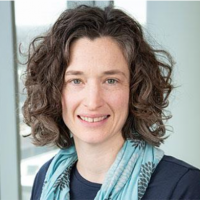CUPC is excited to announce a new round of seed funding for 2021! Learn more about the project below.
Racial Disparities in Genetic Associations: the Role of Environmentally Induced Epigenetic Modifications.
PIs: Jason Boardman & Trent Davidson
An important development in the use of genome-wide data has been the creation of polygenic scores to summarize an individual’s genetic risk of a specific health problem. The predictive accuracy of these polygenic scores is often very different among members of different racial and ethnic groups in the United States and many researchers in the biological sciences attribute this phenomena to differences in the ‘genetic architecture’ between socially defined racial and ethnic groups. However, findings from gene-environment interaction research consistently demonstrate that genetic associations are often weaker among those who face the greatest number of constraints and limitations because of their social identity. Our study will use detailed information about lifetime and current exposure to different forms of discrimination among white and black adults to highlight the centrality of social factors responsible for the observed differences in genetic associations.
Understanding Mortality Disparities using High Spatial Resolution Data.
PIs: Myron Gutmann, Stefan Leyk & Cyrus Hester
There is a growing body of evidence suggesting a pattern of persistent and emerging mortality penalty afflicting rural America. However spatial variation in the magnitude of mortality differences and specific causes underlying it are less well understood. This project uses an innovative approach of community detection algorithms with high-resolution mortality data as a means of defining populations by their mortality experience. This project has important contributions in evaluating the scale and robustness of mortality rate estimations. Using Colorado as a test-case, this project will be expanded to other states as additional high-resolution mortality data is acquired.
Health and Well-being after Abrupt Return Migration in Coastal Bangladesh.
PI: Amanda Carrico
The pandemic has resulted in increased disease and mortality throughout the world, but also indirect social and economic impacts stemming from measures to mitigate transmission. Migrants and their families are especially vulnerable, as are others living in areas experiencing high rates of return migration. This research will use longitudinal survey methods to examine the health, economic, and environmental consequences of the COVID-19 pandemic on migrants, their families, and origin communities.
Youth Deaths Involving Firearms: Identifying Trends and Contextual Characteristics to Inform Prevention Strategies.
PIs: Erin Kelly and Jani Little
This study will identify patterns and the contexts for youth deaths involving firearms in the U.S. using national restricted data. The contextual information will help us identify risk factors for these deaths, such as demographics and life experiences, methods of firearm access, as well as socioeconomic and geographic contexts. Identifying risk factors for youth deaths involving firearms will help researchers and practitioners identify effective strategies to prevent youth suicide, violence, and injuries involving firearms.
Understanding and Promoting Sexual and Reproductive Health of Youth with Child Welfare Involvement.
PI: Katie Massey Combs
This project explores factors that promote sexual and reproductive health among adolescents with child welfare involvement. Specifically, we will examine sexual and reproductive health attitudes and educational experiences among adolescents aged 12-15 with child welfare involvement, disaggregated by demographic and child welfare factors (i.e., race, sex, age, out-of-home care status). For youth with child welfare involvement, little is known beyond that they are at increased risk of adverse outcomes (e.g., unintended pregnancy, sexually transmitted infections). This project will provide basic descriptive and longitudinal information that is desperately needed to understand this population’s sexual and reproductive health needs and how to tailor services and interventions to meet them. The work will lay a foundation for an NICHD grant proposal.
In addition to the awards above supported by the center’s NICHD funding, the below grants were awarded using internal funds:
How Immigration Became Temporary in Colorado, 2005-2020.
PI: David Cook-Martin
Colorado’s agricultural and hospitality sectors have experienced labor challenges during the pandemic of 2020. In part, these challenges are connected to a growing reliance on workers with temporary visa statuses. Colorado is not alone. The proportion of temporary to permanent admissions in the United States has been on the rise since the mid-2000s. Neither is Colorado’s experience with temporary foreign workers new having received its share of bracero workers between 1942 and 1965. This project explores what it means to have a population of part-time workers from another country. What are the costs and benefits to Colorado, its full-time resident population, and the people who sojourn in the state for part of the year? How do federal level policies on non-immigrant visas play out at the local level? Our study examines such questions for places in Colorado while engaging national, international, and historical perspectives.
Covid-19, Tourism, and Conservation in Dryland Africa: Changing Environments and Populations
PI: Mara Goldman
An important focus of Environmental Demography is to better understand how institutions mediate community and individual responses to environmental and demographic change including those brought about by natural and social disasters. The Covid-19 pandemic has unleashed unprecedented changes across the planet and is both exposing vulnerabilities as well as providing opportunities to (re)build more resilient institutions and livelihood pathways. This project explores how this is happening in dryland communities in East and Southern Africa. The project will advance knowledge in the environmental demography literature by analyzing: 1) the impacts of state-enforced COVID-19 containment measures on community-based-conservation (CBC) landscapes and institutions in Africa’s drylands; and 2) the local community responses to the natural-social disaster of the sudden disappearance of tourism and conservation income flows. The project will also advance scholarship on the resilience of dryland institutions by looking at a case of governmental disease control measures and the impacts on conservation and communities.







